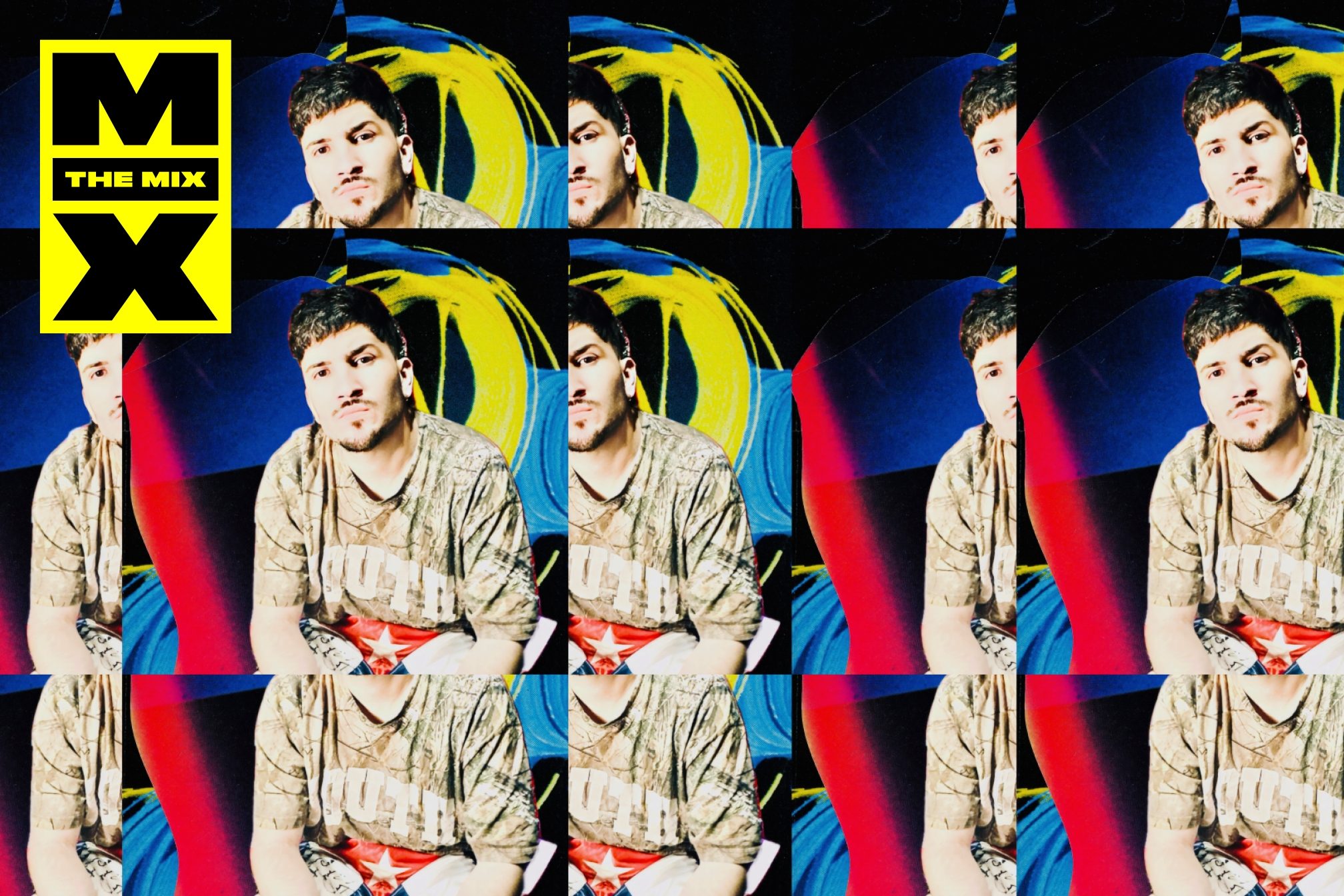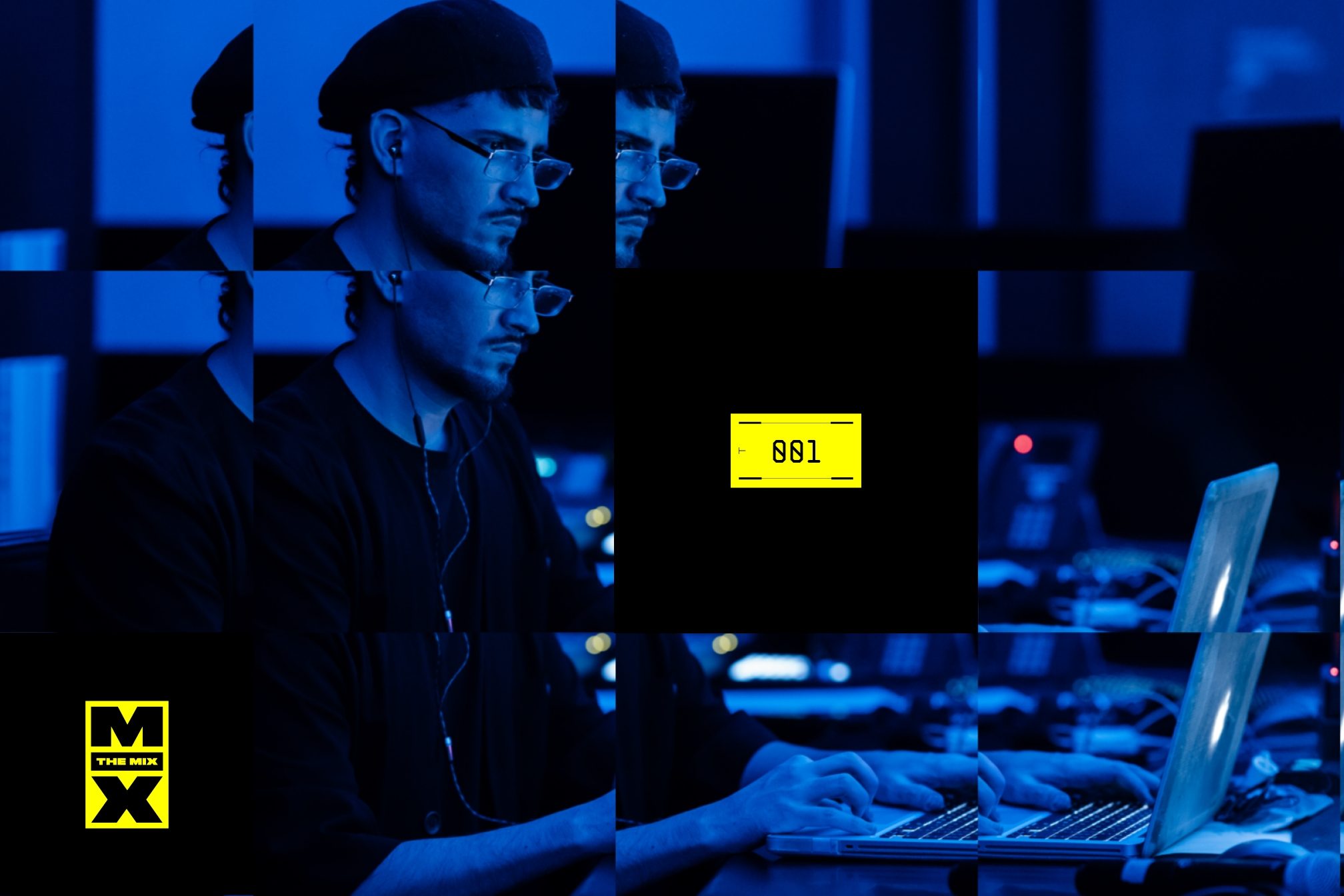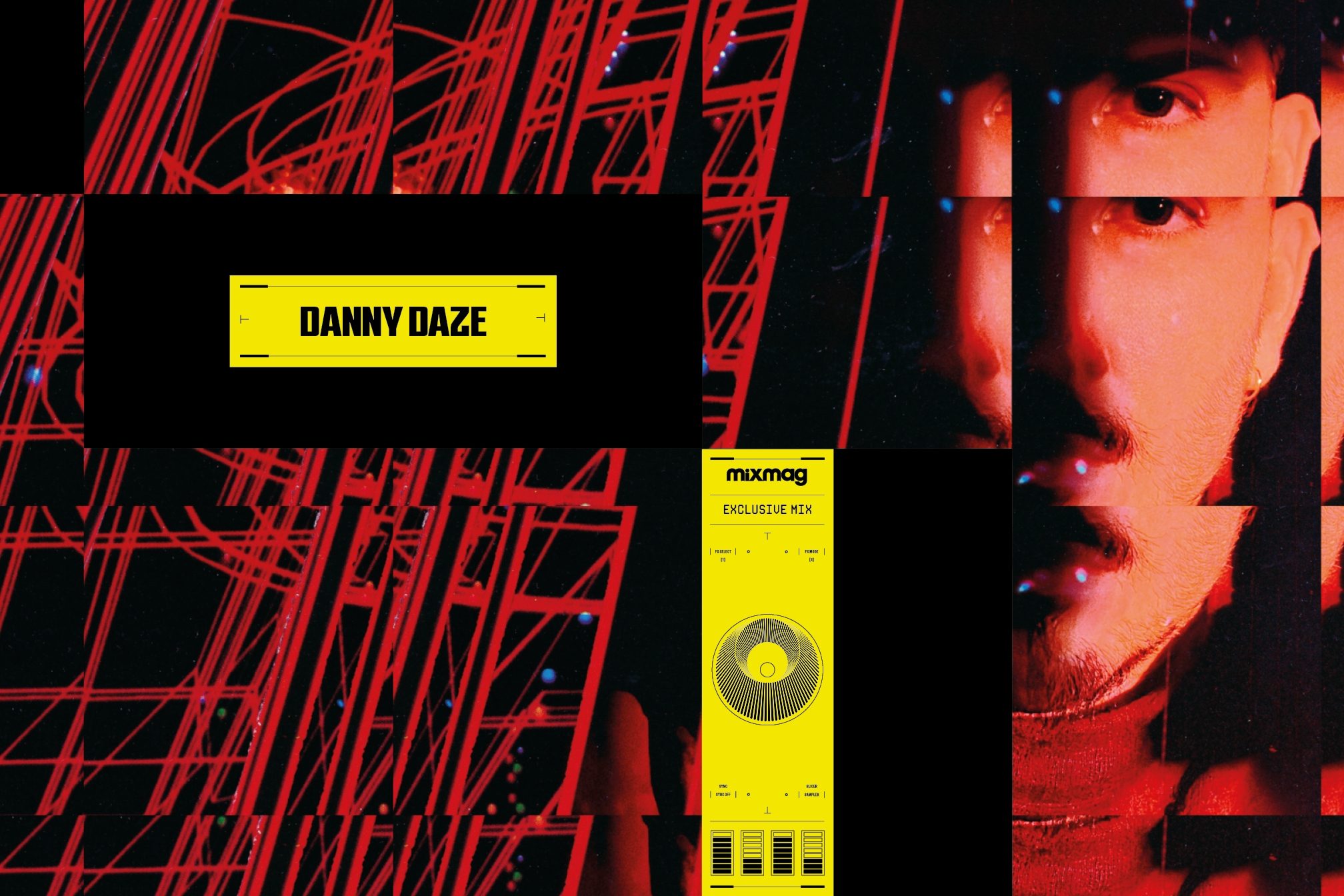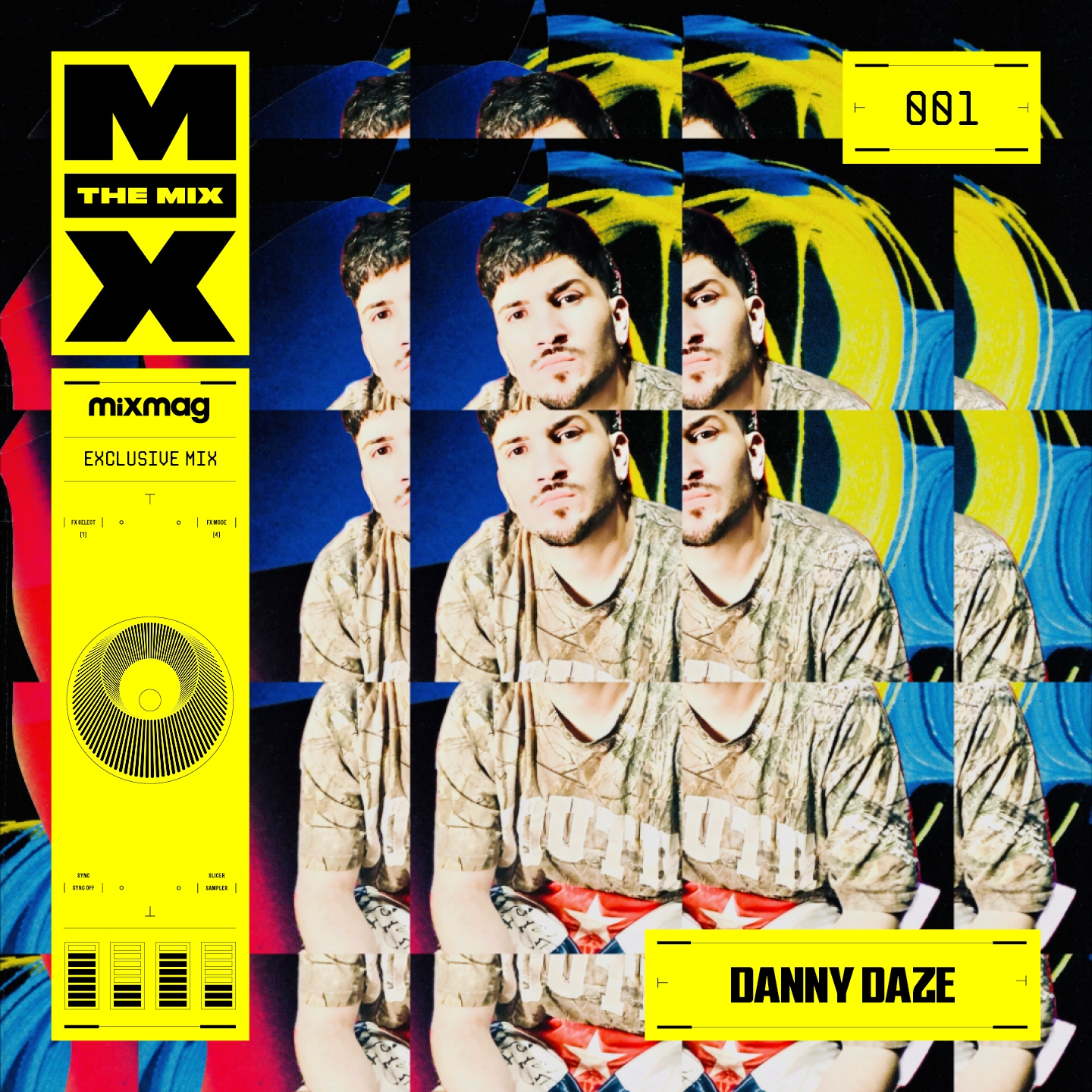 Music
Music
The Mix 001: Danny Daze
For the first instalment of our new mix and interview series, Danny Daze takes us on a trip through the sounds and stories of Miami dance music
The Mix is our new weekly mix and interview series — find out more about it at the end of this feature. First up: Danny Daze
Transport yourself to Club Space circa 2003. It’s a far cry from today’s hanging gardens above the dancefloor and the no-cigarette policy. Instead, you’re inside a dingy bunker with a chance of flooding. But any problem fades away when the first-generation Cuban-American Daniel Gomez/Danny Daze/“Danny From Miami” (his signature salutation) starts spinning.
A B-Boy since ’97 and available-for-weddings-and-bar-mitzvahs-DJ since ’99 is taking his CDs to Space for an all-age rave. Techno? Yes! Electro, for sure! Breaks, house, pop? The heartbreak kid has anything to cure what ails you. Anthony Rother’s ‘Don’t Stop The Beat’ blasts out of the speakers and sparks an instant adrenaline rush. Miami’s breakdancing scene got into IDM and electro via legendary local label, Schematic Records. Sorry, no Warp here.
His DJ career has been on the rise ever since he got his first set of turntables aged 13, paying back his mom, who racked up the credit card bill to do so, within a year. But in about three weeks, it’ll all turn to dust, as they say, because Gomez will be inside the Richard E. Gerstein Justice Building. State of Florida v. Danny From Miami. The charge: selling ecstasy. First Rodney Kitchens of Starck Club, and now Gomez.
Soon he's living under house arrest. The ordeal drained his mom of what money she had, and evaporated his return to university and tennis aspirations; in 2006, he became an exterminator. Miraculously, though, Gomez didn’t fall through the cracks. He stayed out of trouble and found music lovers through AOL Instant Messenger. He had already launched his first label Omniamm in 2005, a short-lived venture focused on IDM-adjacent sounds, but then the online community and friends got him into circles that, like him, listened to bleep-boop electro.
Around that time, Gomez launched producer project DiscoTech with Gigamesh and Joe Maz from Minneapolis, Minnesota. The three made remixes out of the pop songs of the times, from Kanye West to Katy Perry. But Gomez became jaded with remixing, “I felt like I was in the same position as killing cockroaches,” he told Miami New Times. He left in 2010.
A year later, Jamie Jones’s Hot Creations label launched his first solo track, ‘Your Everything’, and ushered in Gomez’s new era that leaped into another defining moment with his 2015 label, Omnidisc. The label now boasts forty releases from local and international talent and has pull in the community. One example of Omnidisc’s breadth took Miami’s unsung IDM hero, Push Button Objects, out of a two-decade long retirement in 2022 for a track off the compilation album 'Homecore! Miami All-Stars'.
But while his artist career rose, one thing kept gnawing at Gomez: He never released his own album. The last three years pushed him to develop, test, create, destroy, and recreate his opus. Last November, he released ‘::BLUE::’, a 90-minute continuous odyssey, paying homage to techno, electro and ambient, that bursts through the four corners of most dancefloor albums. It goes inside the mind of a Miami boy gone mad in the club and his relationship with time’s relentless path forward.
One moment, you’re suffocating in ambient jelly and bass from ‘I’m Fallin’’ and its repeated vocal loop. At another impasse, mystical chimes liquify time and space via ‘福島 (Fukushima)/. Finally, you’re free and soaring into the sun with the album’s paean, ‘Time Lapse.’
“This is the first time I ever explained how I put it together, but ‘::BLUE::’ is an index of a person’s life,” explains Gomez. At some point in production, he wondered if he could make us see through his mind’s eye.
Gomez worked with Connor McDonald, Sensory Works, Joseph Nickson, and Konx-om-Pax to create a same-named, immersive audio-visual experience ::BLUE:: which debuted at Miami’s Phillip & Patricia Frost Museum of Science December 2022. It’s a spectacle: Atoms merge across the great dome as you crane your neck, forming raw energy during one scene. You then begin spinning down a nuclear reactor and fall into a dizzying spiral of galaxies in the next cut. Gomez took ::BLUE:: to III Points Music Festival in October for a special screening played every hour of the festival. Then the screening returned to the Frost Museum last month for the museum’s first-ever nightLAB series. Gomez describes it as: “The easiest way for people to be in my head as I’m sitting down listening to this music.”
The heady overtures and austere sounds of ‘::BLUE::’ and Daze’s more techno-heavy sets would make you think his music is esoteric. Nonetheless, this is Danny From Miami, and when he plays in the Magic City, all bets are off. In December, he spun at Miami’s new venue, Jolene Sound Room. The Miamian played house and techno, but then came a slurry of stone-faced bangers. He dropped ‘Vanished’ by Crystal Castles, The Postal Service’s ‘Such Great Heights’, Everything but the Girl, an LMFAO ‘I’m In Miami Trick’ remix that shouted “D..d….Danny Daze!”, and a 50 Cent remix of ‘It’s Your Birthday.’ Nothing was off limits; it was all possible, and the crowd ate it up.
Mixmag spoke to Gomez at his studio, a convertible guesthouse across the street from his childhood home in Doral, Florida, about a 10-minute drive from Miami International Airport. Fake grass adorned the ceiling under Dolby Atmos speakers, old synths, and a computer. His first CD player rests on an overhead compartment, and vintage Miami swag from Pervert clothing pieces to a plastic flamingo scatter about like Easter eggs. A DJ may be branded as “eclectic” if they can drop St. Germain’s ‘Rose Rouge’ during a techno set, but Gomez's bandwidth for music launches him to another galaxy. He’s been there through every music phase the city has mustered: EDM’s explosion, the resurgence of the underground, and, of course, the ‘Macarena’. But Danny Daze still stands tall. He’s a man paying homage to a city that built him up, cut him down, and patched him up enough to tell his story.

How did you get into dance music? What was the moment that made it all connect?
Felix Sama from Power 96 when I was in West Miami Middle School. I was breakdancing at the time; I had to be, I think, in sixth grade. But I was probably 11-years-old the first time I ever saw a DJ. And then, by the time I was 13, I had my turntables. Every time that we would breakdance, we would go to my house with the kids around the block, and I was the one who would choose the music. I didn’t know that that was DJing.
That eventually led me to go to a school dance and see this guy who had turntables turned sideways and was doing all sorts of cool things. And he had a bunch of records behind him. I was like, ‘Yo, this is the coolest thing I’ve ever seen.’ He was playing everything, booty music and 2 Live Crew. We were booty dancing in school dances. It was wild. Whatever that person was doing, that was what I wanted to do. By my 13th birthday, my mother bought me my equipment, and I quickly paid her back — a couple of thousand dollars. I would DJ weddings and do whatever I needed to do. She believed in it and put it all on her credit card. We were broke; I remember vividly mixing water with milk to have extra leftovers and eating macaroni and cheese. But I think it was her way of seeing me staying home and keeping me out of trouble.
What was the first show you played?
I think it was probably a house party. I think they needed someone, and I got $150. I still have the actual speakers I used right outside. I kept all that stuff. I originally wanted to be a biomedical engineer but ended up in jail. It changed everything. That was the year when the government was really throwing the book for drug offenses. The last party I played before that was Club Space in 2003. I still have the flyer somewhere. I was also playing tennis and getting into the leagues, but I wasn’t good enough. I went another path, unfortunately, but that’s what led me to this: I was under house arrest and got to connect with artists. One door opened, and now I’m here doing planetarium shows.
You started breakdancing in 1997 and DJing in 1999. You’ve produced a large collection of EPs, singles, and remixes, but why did you think ‘::BLUE::’ had to come out now?
I started making music in 2000/2001. The big shift came in 2005 when I got off house arrest and started DiscoTech. It was a big remixing team between me and another guy named Joe Maz and then Joe’s brother Gigamesh. We were very well known. We were playing five times a week and had residencies in Vegas and Atlantic City. So it was that when things took off for me. I gave that up because I just wasn’t happy with everything becoming extremely norm, and there wasn’t a risk being taken. And I, too, had an understanding of that pop world and pop sensibility, and I brought it to that Hot Creations record. And from there, it just went.
It’s taken a bunch of years to not only find the exact sound that I wanted to put out, but it also took a lot of years for people who think they know me to slowly start accepting this other side of who I am as an artist. I couldn’t just go from a Hot Creations record to an experimental IDM record. So, over the last 13 years since that record came out, I’ve just slowly started implementing more and more of who I am.
That shift changed around 2013 when I started working with people like Jimmy Edgar. But with this album, I wanted it to be 100% of who I am. It’s exactly that. Every single little detail is placed there for a reason. I’ve collaborated with people from Push Button Objects to Deroboter, Nick León, Jonny From Space. It was a perfect time. Omnidisc kind of helped me put out a certain type of sound where people know me, and then me doing Boiler Room at Dekmantel and all that stuff.
I think now people consider me an eclectic DJ with technicality. So, it gives me the room to experiment. I consider ‘::BLUE::’ to be just deeper.
This is the first time I ever explained how I put it together, but the album is basically an index of a person’s life on how a person starts off super rudimental. That’s why the beginning is quiet: you just hear very slow lines. Then, it slowly gets heavier and heavier and more accentuated. Then all of a sudden, there’s a big drop-off, which is kind of like midlife — when you have a drop-off — and then, you know, towards the end, it gets really dark, which for me meant the realization that your life is coming to an end. Every track is kind of just influenced by something.
Then it ends with the understanding and acceptance that you’re on your deathbed, and you’re able to say, ‘Okay, I live my life the way that I wanted to.’ That’s why it’s a continuous mix — to make it feel like a movie. We live in 15-second increments. People can barely listen to a song before they’re already skipping on it. I wanted to do a continuous mix so that people could understand or try to take in a different way of consumption.
Read this next: "Gravitating towards the weird shit": The story of Danny Daze
What influenced ‘::BLUE::’? It seems like Aphex Twin and Board Of Canada and other IDM artists informed the record.
Yes, but the crazy part is that I don’t know much about Aphex Twin. I’ll probably get hated on for that. I know ’Selected Ambient Works’, but that’s about it. I was very much influenced by the labels that were in Miami called Schematic, M3rck, and others. The IDM scene in Miami was very different than Warp. They came from Miami bass. So there was this Miami bass element to it that was funky, booty music with tweaked-out aliens in the background.
These guys were doing this in ’95. I didn’t even know where they were doing parties. They were dudes like Soul Oddity, specifically their ‘Tone Capsule’ album. When I heard that, I was like, ‘This is gnarly, dude.’ Just straight bleeped-out music, but that had a structure that you can remember. It wasn’t just you throwing a bunch of kitchenware around and calling it IDM.
You once told me that making the ‘::BLUE::’ visual show was the hardest thing you’ve ever done. Why did this album need something as grand as a 40-minute feature at a planetarium?
I’ve never really been a fan of flat screens with musicians in front of things. The flat screen can be beautiful; there’s beautiful stuff playing in the background, and then there’s someone’s silhouette in front of it, which blocks the full screen.
But not only that, I would sit down right there [Gomez points to a cushion near his computer], and I would meditate, or at least leave a loop going of the songs that I was producing, and I would see what pops in my head, and jot it all down in a composition book. That essentially turned into the planetarium show. It’s the easiest way for people to get into my head, which is what I wanted to try.
So then I had to find the right people that I could go back and forth with, where they kind of understood what I was going for, and give them a bit of artistic openness where they could do whatever they wanted as well. So it was just back and forth between the guys, Connor McDonald and Joseph Nixon, and me. They really put a lot of work into this; they did it for much cheaper than what they usually charge for anything, I just believe that they wanted to work on a project that came from somewhere real. And, of course, being given the opportunity to work on a planetarium is also kind of cool.
The planetarium show allows you to be fully engulfed, your peripheral vision is taken, and you’re able to feel everything around you. It’s way different than just having a flat screen and me performing in front of it. You’re sitting down and fully taking in a surround sound system that’s playing the surround sound mix with all these images.
The first scene is from, I believe, one to three years old, where everything is super rudimental; the second scene is maybe adolescence, and so on. All these factors came together, thankfully. I think this is opening up a pretty cool door for me where I will continue to go down this path of interesting visuals in a different way. I’m already working on a 360° live show.
How did you approach the Frost Science Museum curators to collaborate on the project? It is a science museum families go to on the weekends.
They were totally in, especially when we did a test. And with the test, they were like, ‘Yo, this is sick.' When we came back with the full show, they wanted to do more. And now they basically started this thing called nightLAB [a late-night adults-only planetarium showing], with ::BLUE:: being the first show.

You recently played a set at Miami’s new sound room, Jolene. You played a lot of techno, house, and electro but then went off-roading by dropping LMFAO, The Killers, and 50 Cent rapidly. How did you do this? Why? Just in October, you went b2b with Daniel Avery and must’ve played 135+ BPM techno for two hours.
It’s 25 years of experience. I was a resident DJ here in five different clubs, five different nights in Miami. It's just who I am. I'm this open-format person, and that's why the word “omni” means so much to me — I’m omni; I’m always possible, from my fashion style to the art that I like in general. And when it comes to DJing, I come from this A.D.D kind of DJing where I had to play for eight hours a night, and I had to play fast, so I had to play records really fast — I’m talking 30 seconds of ‘Come on, put your hands up’ and then you scratch into something else.
Somebody has recently hit the everything-and-anything-goes-button, and this is where I love to go. If I'm doing an open format party as I did, it’s totally off the grid, but it made everybody realize there to say, “Hey, damn, we can do this too.” But that's where the experience of knowing how long to play something, if even to play it all, and the experience of understanding fillers and understanding tracks that go in between. Essentially, if you want to get over here playing a hip hop record, you have to fill it. You have to get to that point. What I did at Jolene was really an ode to what I used to do back in 2005. I wouldn't do that in Room 1 at fabric, for example.
You have a student-teacher relationship with some of Miami’s younger generation, like Jonny From Space and Nick León, who collaborated with you on ‘::BLUE::’, to Coffintexts and INVT. They even have the keys to your studio and are now enjoying their own careers. What made you decide to be Miami’s fun uncle and take the younger generation under your wing?
Because I wish I had that. I wish I had somebody when I was coming up that I could ask questions and get their feedback, and maybe not take the advice and follow my own path. But I think it’s crucial that a person with a platform makes sure that it is spread out for other people to use as well.
For me, it meant giving the keys to this studio when I was gone for months and using it whenever they wanted. They slept here. I trusted them. I think it’s important just to have that open nature, especially when you’re getting older, because the older you get, the more jaded you become. I have to feel like I have a second or third wind — and they all represent that. They make me feel like I’m their age. There’s a side of it that’s selfish because it lets me keep doing what I want to do, and on the other side, it gives people another platform.
Do you credit yourself with their successes?
Not even remotely close. No, no way. They would have been big anyway. They're all so talented. Maybe I just gave them a place to make some cool music and answer their questions.
Read this next: Life on the edge: Danny Daze on risking his life
Why is your studio in Hialeah? Aren’t all the producers nestled in Brickell, Downtown, and Wynwood?
Well, I own the house, but I lived in the house across the street. As a kid, I would come here, and I knew there was this two-car garage in the back, which is where you're sitting. And I knew as a kid that I wanted to buy this house and turn it into a studio. So, I ended up overpaying for the house and turned this thing into a studio.
Do you think time is erasing Miami’s glory before the EDM boom? I know you mentioned Schematic but it does seem to have been overshadowed with what was going on with Europe between IDM and techno — and New York, Detroit, and Chicago stateside.
There were labels out here that were pretty huge, but there just isn't a developmental space in Miami anymore. So, my next goal is to open up a club with a restaurant and stuff like that attached to it. I want it to be a developmental space where people can fail, and it is okay. I really like that I want people to be able to fail. I want people to go and try some really cool stuff, and eventually, we can, you know, do it for the culture. I'll supplement that failure, whatever it is, money-wise. If I can break even, that'd be cool. Being that I've almost 2500 shows now, I kind of know what's needed.
What would you tell younger Danny?
I’m pretty satisfied and don't feel like I regret anything. I guess it would learn how to play instruments — everything is all MIDI, but then again, maybe that is why my music sounds the way it does.
And finally, tell us about your instalment of The Mix.
With this mix, my intention is to show a side of the IDM world I grew up with, steering away from the misconception that IDM is chaotic kitchen utensil-like sounds. I wanted to show a softer side focused on “danceable IDM” and electro. Music you can still bop your head to. As a youngster, I grew up dancing to non-traditional rhythms coming out of labels like M3rck, Schematic, and Beta Bodega, so I wanted to represent quite a bit of this Miami-infused sound along with some newer acts I’ve been immensely into at the moment.
‘::BLUE::’ is out now via Omnidisc, get it here
Grant Albert is a freelance writer, follow him on Twitter
Check out The Mix 001 and tracklist below

Tracklist:
1 Danny Daze - 110 Dudes
2 Phoenecia - Grrl Trrbl
3 Newcleus - Jam On It (Soul Oddity Remix)
4 Sohn Jamal & Roiju - 51 Whistles
5 Plebeian - Hot Take
6 Jonny From Space - Skin On Skin
7 AZARI - AQTETRA
8 Coffintexts - Basic Beat
9 MD - Appelsap (Brothomstates Remix)
10 Brainwaltzera -- Evening Narcomnastics
11 o9 - Seven Milliseconds
12 RHR - Orbital
13 Adam Johnson - Four Squares
14 Forvitinn - Third (Terrordisco Remix)
15 Nicholas G. Padilla - Shadow Work
16 Nick León - Dirty South
17 theweedjs - The Beatles
18 Superstructure - Onesix-four
19 Danny Daze - Time Lapse
About The Mix:
The Mix is our new online mix and interview series, dedicated to the spectrum of electronic music from around the globe, exploring sounds and stories from the early days of rave to the future.
Mixmag has a long history of publishing mixes, from our legendary cover CDs accompanying the print magazine to our worldwide video streams in The Lab. Last year we celebrated 40 years in the game and The Mix now arrives as a fresh outlet to document DJs and the musical movements they represent, showcasing their sound alongside an in-depth interview. The design pays homage to a previous Mixmag logo from the early ’90s, nodding to our heritage while using the square and rectangular building blocks to construct an aesthetic that works cohesively with contemporary design elements and digital motion systems.
We’ll still be bringing you the Cover Mix, The Lab and occasional sets in other formats, with The Mix is taking the place of our In Session and Impact features, intending to bring an updated look and vision to our flagship weekly DJ profile and sequencing them into one place, without separation. We hope you enjoy.
Patrick Hinton (Editor & Digital Director) & Keenen Sutherland (Senior Designer)


